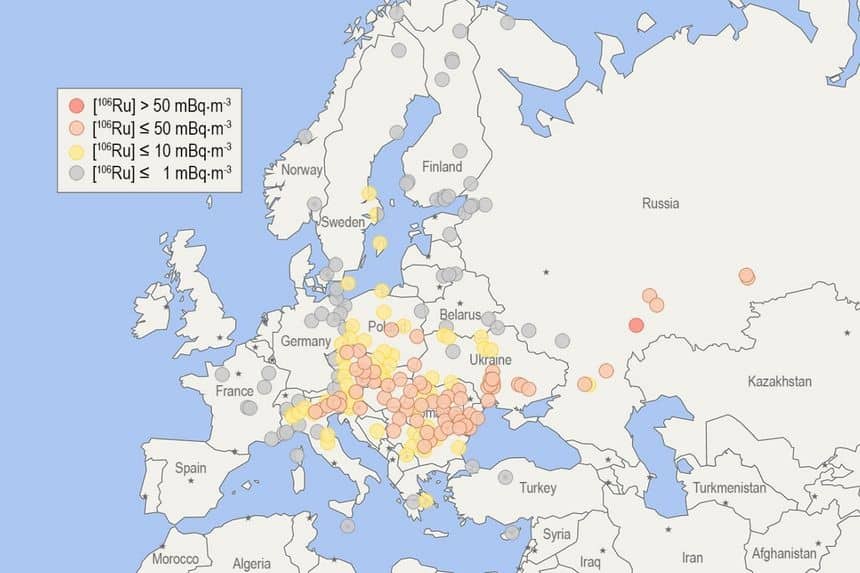
UPDATE: Lars Roobol of RIVM in Bilthoven pointed out to us that the incident was already known immediately after it occurred . At the beginning of 2018 the Volkskrant published this article about it. (Dutch)
In September 2017, a radioactive cloud swept over Europe. It was the most serious release of radioactivity since Fukushima in 2011. So far, no state has taken responsibility for it. Now a transnational study has uncovered the circumstances.
The extent of the radioactive cloud was enormous. It could be measured in large parts of Central and Eastern Europe, Asia and the Arabian Peninsula and could even be detected in the Caribbean. More than 1,300 measured values throughout Europe and beyond were analyzed in the study. Seventy experts from all over Europe contributed data and expertise.
Professor Georg Steinhauser from the Leibniz University of Hannover, who evaluated the data, speaks of “probably the largest single release of radioactivity from a civil reprocessing plant”. Radioactive ruthenium-106 was measured, peaking at one hundred and seventy-six millibecquerel per cubic meter of air. This is a hundred times the value of the total concentrations which were measured in Europe after Fukushima. The radioactive isotope reaches its half-life value in three hundred and seventy-four days.
Nevertheless, despite the unusually high release of ruthenium-106, the European population, at least, was not at risk. The data analysis showed a total release of approximately two hundred fifty to four hundred Terabecquerel.
Determining the cause
The experts concluded that it had not been due to a reactor accident, but rather an accident inside of a reprocessing plant. The decisive factor was the evidence that no radioactive substances other than ruthenium were measured. Steinhauser states:
“We were able to prove that the accident happened during the reprocessing of used fuel elements, at a very advanced stage of reprocessing, just before the end of the process chain. Even though there is no official statement yet, we have a fairly detailed idea of what might have happened.”
Determining the origin
The exact origin of the radioactivity remains difficult to determine. However, the evaluation of the concentration’s distribution pattern and atmospheric modelling suggests a release site within the southern Urals. This is where the Russian nuclear facility Majak is located. It is a reprocessing plant where the second largest nuclear release in history – after that of Chernobyl and before that of Fukushima – was already documented back in September 1957. At that time a tank with liquid waste from plutonium production exploded and had caused massive contamination of the region.
Determining the time period
The timing of the release could be limited to the period between 6 pm on the 25th September 2017 and somewhere around midday on the 26th September 2017. This was reported by Professor Steinhauser, who carried out the time analysis together with Olivier Masson from the Institut de Radioprotection et de Sûreté Nucléaire (IRSN) in France. While the releases in Fukushima and Chernobyl lasted for days, this time it was a pulsed release, according to Steinhauser.
The following experts were involved in the study:
- Dieter Hainz and Paul Saey vom Atominstitut at TU Vienna;
- Professor Georg Steinhauser from the University of Hannover (data analysis);
- Olivier Masson from the Institut de Radioprotection et de Sûreté Nucléaire (IRSN) in France (data analysis);
Publication:
- Masson et al. (2019): Airborne concentrations and chemical considerations of radioactive ruthenium from an undeclared major nuclear release in 2017. In: Proceedings of the National Academy of Sciences of the USA (PNAS)
